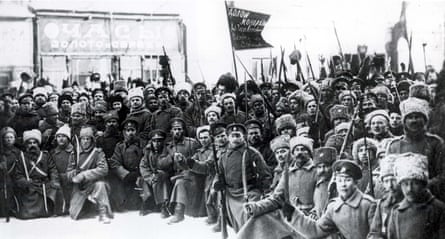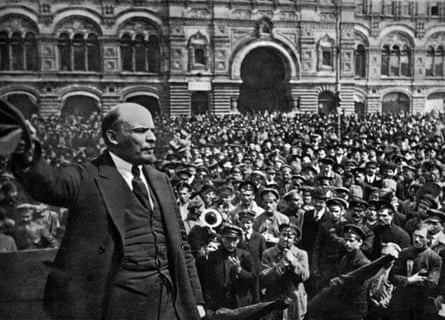A grant from an anonymous donor is enabling the late Aleksandr Solzhenitsyn’s epic cycle of novels about the Russian Revolution – a work which was the Soviet dissident writer’s “life’s mission”, according to his son – to be published in English for the first time.
Stephan Solzhenitsyn said the upcoming translation covered “the very heart of the Russian Revolution: the toppling of Russia’s 1,000-year monarchy”. His father was born in 1918, a year after the revolution and at 17 he decided to “be its chronicler”, in 1936. “War, prison, camps, survival from terminal cancer, and his fight to tell the story of the Gulag intervened and delayed, but did not stop him from his life’s mission,” said Stephan.
With the first volume translated by Marian Schwartz, the six upcoming books are part of the Nobel laureate’s multi-volume magnum opus about the Russian Revolution, called The Red Wheel (Krasnoe Koleso). While Solzhenitsyn came up with the idea of The Red Wheel in the 1930s, he did not begin the first part, August 1914, until 1969. While the first and second – November 1916 – have previously been translated into English, the following six volumes have never been released in English before. In a mix of “newspaper headlines of the day, fragments of street action, cinematic screenplay, and historical overview”, The Red Wheel starts with the beginning of the revolution in Petrograd, when bread riots kicked off, the imperial government fell and the leaders of the opposition failed to control the course of events, said publisher the University of Notre Dame Press, which will release March 1917, The Red Wheel, Node III, Book One in November.

It will be followed by translations of the next three books of March 1917, which cover until 31 March, and then by the two books of April 1917. The translations were made possible following what the publisher said was a “generous” anonymous donation to the Solzhenitsyn Initiative at the Wilson Center’s Kennan Institute, in Washington DC, from a reader of the novels.
“Many readers know that Solzhenitsyn was unjustly imprisoned by the communist regime and wrote about the camps, which are the result of the revolution, but few know that Solzhenitsyn in fact dedicated his life to studying the revolution itself, and its causes,” said Stephan Solzhenitsyn.
“You might say that he caught the last train of departing memory. He was able to interview some of the last living participants of those fateful days in 1917, and of the Russian civil war that followed. His childhood years were the fearsome Soviet 1920s and early 1930s, when the revolution was in fact still ongoing, completely reshaping the old order amidst an atmosphere of terror. Born just a year after the revolution, he breathed its powerful, both terrifying - and for some, edifying – air.”

The Red Wheel sees Solzhenitsyn telling the stories of more than 100 individuals as the Russian empire begins to crumble. Each day is split into morning, day, evening and night, with chapters dealing with each period. “And sometimes, the story goes hour by hour, and even minute by minute. History is compressed. If in Gulag Archipelago or in the earlier novels of The Red Wheel a chapter could be 20 to 50 pages long, here the typical chapter is about four to five pages long; some a page. Some of the chapters are as if from an action thriller. Yet others are reflective. And a few purely documentary,” said Stephan Solzhenitsyn.
The Red Wheel has been described variously as “one of the masterpieces of world literature”, and as “Anna Karenina and Doctor Zhivago, with Dostoevsky’s Demons thrown in for good measure”. The author himself saw it as “the narrative of revolution in Russia, its movement through the whirlwind of revolution”.
Solzhenitsyn died in 2008, aged 89, having told the world of the horrors of the Soviet labour camp system in books including One Day in the Life of Ivan Denisovich and The Gulag Archipelago. He was awarded the Nobel prize for literature in 1970, but was exiled from the Soviet Union in 1974 following the publishing of The Gulag Archipelago. He returned to Russia in 1994, and lived there until his death.

Comments (…)
Sign in or create your Guardian account to join the discussion